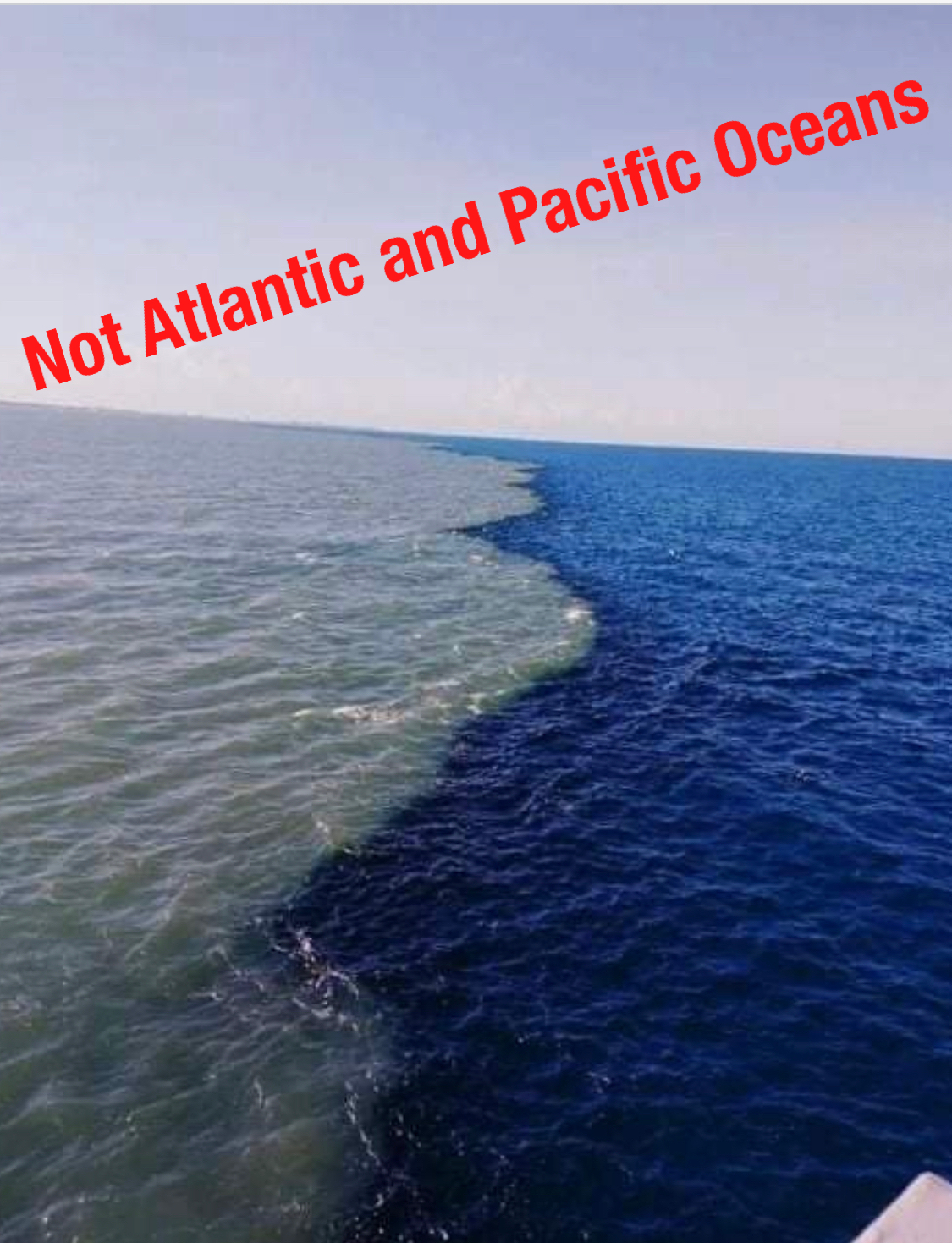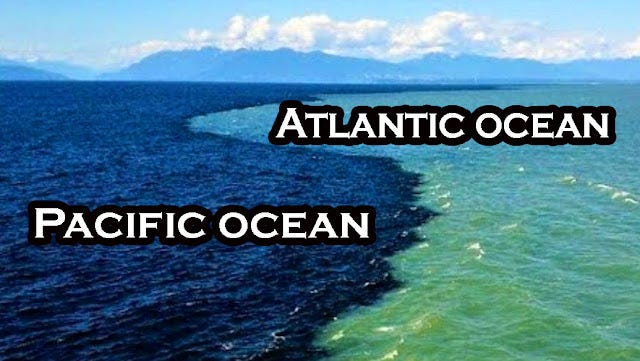Why Does The Pacific And Atlantic Never Mix

Ever seen those pictures online? You know, the ones showing two oceans meeting? It looks like someone drew a line down the middle of the water. It's pretty wild!
The Great Ocean Standoff
We're talking about the Pacific and Atlantic Oceans. They're massive! These watery giants border each other at various points, most famously near Cape Horn in South America. They don't exactly mix like you might expect.
Instead of swirling together instantly, there's often a visible line. It's a foamy, frothy divide. It almost looks like a watery border dispute!
So, What's the Deal?
Okay, let’s be clear: the oceans do mix, eventually. It's not like there's an invisible wall holding them back forever. But the process isn't as instant or uniform as you might think.
Several things contribute to this fascinating phenomenon. The biggest factors involve salinity, temperature, and density.
Think of it like this: Imagine trying to mix oil and water. They’ll separate, right? Ocean water with different properties acts similarly, at least initially.
Salinity is a big player. The amount of salt in the water differs between the Pacific and Atlantic. This affects the water's density.
The Atlantic, generally, is saltier. More salt equals denser water.
Temperature also plays a role. Colder water is denser than warmer water.
So, you have two huge bodies of water. They have different temperatures and salinities. This means different densities.
When they meet, they don't immediately blend smoothly. The differing densities create a visible barrier.
The Role of Ocean Currents
Ocean currents are like underwater rivers. They’re constantly moving water around the globe. These currents can influence the mixing process, too.
Strong currents can reinforce the separation. They push the different water masses against each other.
Think of the Gulf Stream. It's a powerful Atlantic current. It helps maintain some of these differences.
Why It's So Cool
The visual effect is just stunning! It's a powerful reminder of nature's complexity.
It’s like witnessing a slow-motion collision of worlds. A constant reminder that everything is connected, yet different.
These meetings can create unique ecosystems. Specialized creatures adapt to the specific conditions found in these transition zones.
Plus, it sparks our curiosity! It makes us ask questions. Questions about our planet, about how things work. This makes it special.
Go See for Yourself (Maybe!)
Witnessing this phenomenon firsthand is pretty tricky. It's not always visible, and it depends on the weather and ocean conditions.
However, there are places where you have a better chance. Look into trips that take you near Cape Horn. Some cruises advertise the experience.
Even if you can't see the distinct line, the raw power of the ocean is incredible. The journey is worth it. Just remember to bring your sea legs!
So, the next time you see a picture of these oceans meeting, you'll know the basic reasons behind it. It's not magic. It's science. But it still feels pretty magical.
Keep exploring. Keep asking questions. Our planet is full of amazing sights and scientific wonders waiting to be discovered!


















